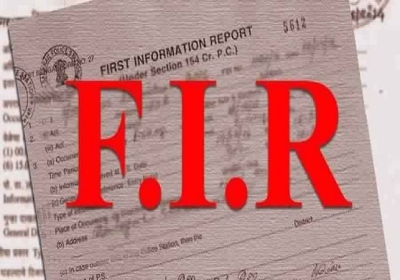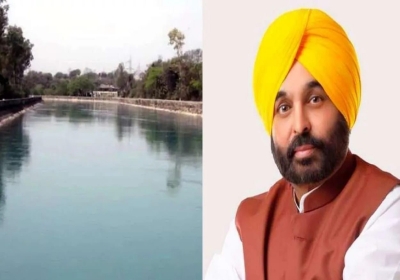
India holds mock drills for wartime readiness on May 7
India conducts May 7 mock drills to prepare for wartime blackouts and sirens
On May 7, 2025, India will carry out one of its largest civil defense drills in decades. This mock drill is a part of a nationwide exercise to test how prepared the country is for emergencies, particularly in light of the recent terror attack in Pahalgam, Jammu and Kashmir, which has caused rising tensions with Pakistan.
The Ministry of Home Affairs (MHA) directed all states and union territories to conduct full-scale civil defense drills. The goal is to ensure that the country is ready for new and complex threats. These mock drills will include multiple activities, such as air raid siren tests, wartime blackout simulations, evacuation drills, and coordination with the Indian Air Force (IAF).
The drill will take place across 259 civil defense districts in India, with timings varying across cities. However, most drills will begin around 4 pm. People in the participating regions will be asked to participate and follow specific instructions related to air raids, sheltering, and other civil defense actions.
Key features of the Drill
The mock drill will test many aspects of the country's preparedness. The air raid sirens will be sounded to check if they are working correctly and whether they can alert people about a potential attack. Authorities will also train civilians, including students, hospital staff, and workers in government and private sectors, on what to do during such attacks.
Bunkers and trenches will be cleaned and prepared as part of the exercise, and people will practice taking shelter in these safe spaces during the drill. The primary aim of the exercise is to assess how effective the warning systems are and to make sure that all the control rooms and emergency communication systems are ready to operate. The Indian Air Force will also be involved, working to ensure that communication links between the control rooms and the Air Force are active.
Authorities are preparing for this large-scale mock drill, and it will involve the coordination of several departments. These include police, paramilitary forces, defense personnel, and other government officials. People will practice the necessary actions they would need to take if there were an actual threat to national security.
Where will the Drill take place?
The mock drill will cover cities that have important installations or vulnerable areas. These include places like metro cities (Delhi, Mumbai, Chennai, Kolkata) and areas close to the border or with sensitive nuclear plants, military bases, and refineries. Special attention will be given to regions with high security risks, as they may be targeted during a conflict or an emergency.
For example, Delhi will have a specific exercise named "Operation Abhyaas", which will take place at 55 different locations. The Delhi government has already issued a list of dos and don’ts for the residents to follow during the drill.
The exercise will also be held near important facilities like nuclear power plants, military installations, hydroelectric dams, and other critical infrastructure. The government is taking extra precautions in these areas, ensuring that both the personnel working there and the people living nearby know how to respond in the event of a threat.
Despite the large scale of the exercise, authorities have confirmed that daily services will continue as usual. This means that public transport systems, buses, trains, and flights will not be affected by the drill. While the drill is going on, normal operations will continue, and people can carry on their daily activities as they normally would.
ALSO READ: Pakistan FM radio stations stop playing Indian songs amid rising tensions with India
ALSO READ: PM grants operational freedom to forces for Pahalgam attack response
Indian Air Force's Role
Along with the civil defense drills, the Indian Air Force (IAF) will be conducting a high-intensity aerial exercise. This exercise will take place over the desert sector and the western border starting Wednesday. It will be a two-day military exercise, testing the readiness of the Air Force to respond to emergencies and threats along the border with Pakistan.
The IAF exercise is part of the government’s broader efforts to ensure that the country is ready to face any military threat or security challenge. The exercise will involve fighter jets, bombers, and helicopters flying at different altitudes and speeds. The aim is to simulate war-like conditions and evaluate how well the IAF can carry out a coordinated air operation.
The nationwide civil defense mock drills scheduled for May 7, 2025, are an important part of India's effort to prepare for future security threats. The exercises will help test the country's ability to respond to attacks and emergencies, especially in light of the recent tensions with Pakistan. These drills will include multiple activities, from air raid sirens and blackouts to evacuations and military coordination.
Although the drills are extensive, daily life will continue as usual, and there is no need for people to panic. The drills are meant to be a practice to ensure that the systems in place are effective and ready for use if a real emergency arises. The Indian Air Force’s high-intensity aerial exercise is an additional step to ensure that the country's air defenses are strong and ready to handle any threat.
This effort will also help train civilians on how to protect themselves during emergencies, teaching them how to respond to warnings and take shelter when needed. Ultimately, these mock drills aim to make India more prepared and resilient against any security threat, ensuring that the country is ready for a range of emergency situations.
The Indian government is committed to strengthening its civil defense systems and making sure that the public is well-prepared in case of a real emergency. This drill is an important part of those efforts, and it is expected to improve the readiness of citizens and officials alike in the face of potential threats.





